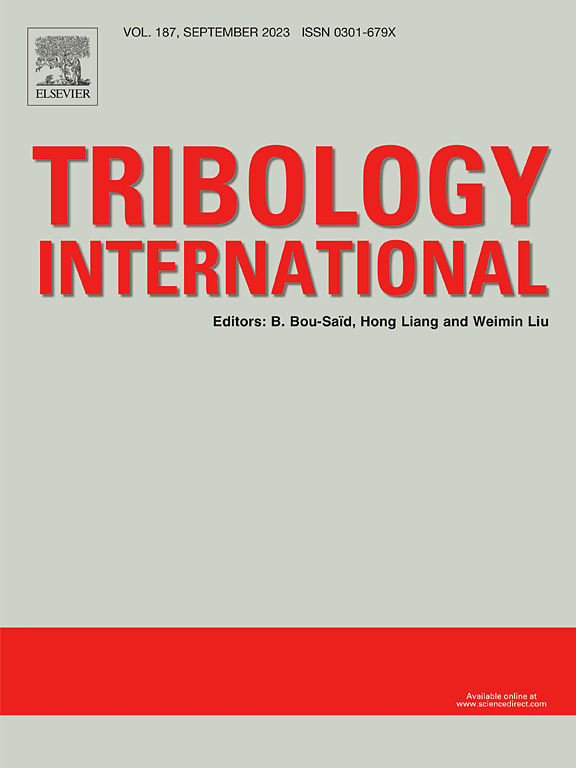Tribological behaviour of nano-titanium dioxide filled UHMWPE composites with a variety of micro fillers based on carbon, boron nitride and silicon dioxide under water-lubricated condition
IF 6.1
1区 工程技术
Q1 ENGINEERING, MECHANICAL
引用次数: 0
Abstract
Recent advances in the tribology of polymer composites in water-lubricated conditions have focused on achieving a synergistic effect by incorporating multiple fillers into the polymer matrix. This approach requires a comprehensive understanding of how each filler interacts with the other components, something that remains unknown for hard fillers. This study investigates the tribological performance and tribological mechanisms of a hard filler, nano-titanium dioxide, in a short-carbon-fibre-reinforced, ultra-high-molecular-weight-polyethylene (UHMWPE) composite when combined with microfillers that include graphite, hexagonal boron nitride and silicon dioxide. The results reveal that, while composites with nano-titanium dioxide and microfillers improve the friction by 30–53 % compared to basic fibre-reinforced UHMWPE, the nano-titanium dioxide reduced the friction only with boron nitride and silicon dioxide. In these cases, the nano-titanium dioxide contributes to transferred material onto the steel surface where it embeds in a relatively softer layer of material composed of other components transferred from the composite and thereby reduces the friction. In contrast, all the composites have lower wear rates than the basic carbon-fibre-reinforced composite. We present how the nano-titanium dioxide interacts synergistically with all the microfillers, with each filler contributing in its own way to improving the load-bearing capacity and hindering the fibre pullout. Surprisingly, the combination with the graphite microfiller did not reduce the friction, but had the lowest wear rate in this study of 5–8 × 10⁻8 mm³ /Nm. The impact of the contact pressure on the fillers’ interactions and the tribological performance is also highlighted in this study.
求助全文
约1分钟内获得全文
求助全文
来源期刊

Tribology International
工程技术-工程:机械
CiteScore
10.10
自引率
16.10%
发文量
627
审稿时长
35 days
期刊介绍:
Tribology is the science of rubbing surfaces and contributes to every facet of our everyday life, from live cell friction to engine lubrication and seismology. As such tribology is truly multidisciplinary and this extraordinary breadth of scientific interest is reflected in the scope of Tribology International.
Tribology International seeks to publish original research papers of the highest scientific quality to provide an archival resource for scientists from all backgrounds. Written contributions are invited reporting experimental and modelling studies both in established areas of tribology and emerging fields. Scientific topics include the physics or chemistry of tribo-surfaces, bio-tribology, surface engineering and materials, contact mechanics, nano-tribology, lubricants and hydrodynamic lubrication.
 求助内容:
求助内容: 应助结果提醒方式:
应助结果提醒方式:


